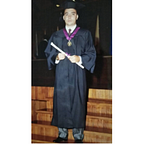The Purpose of Interceptive Orthodontic Care
An alumnus of the Central University of Venezuela, Dr. Ivan Rodriguez Gelfenstein is a retired orthodontist who began his career in San Juan de los Morros, Venezuela, serving at the Acosta Clinic as a general dentist in the private sector. Throughout most of his career, Dr. Ivan Rodriguez Gelfenstein practiced dentistry and provided orthodontic care for patients.
Orthodontists can perform interceptive orthodontic care for a pediatric patient as a preliminary step to getting braces. Braces slowly adjust improperly positioned teeth in the mouth to enable non-surgical correction of misalignment. Interceptive orthodontic care can shorten the length of time it will take for braces to correct misalignment, since it paves the way for dental correction earlier on. This makes dental correction easier and more comfortable. It can also augment the function of braces.
Interceptive orthodontic care may combine diverse treatments. For example, a child with protruding upper incisors (front teeth) may have interceptive orthodontic care to prevent fracture from trauma. Interceptive orthodontics can also help address problems like speech impediment (from misaligned teeth), crossbites, and difficulty chewing at an early stage.
Interceptive orthodontic care should be initiated at the beginning of adult tooth eruption, when the first permanent adult tooth appears. Although the beginning of adult tooth emergence varies among children, the typical range is from age five to seven. At this stage, an orthodontist combines a series of treatments while the majority of teeth are still baby teeth. When the permanent adult teeth begin to dominate the mouth, the orthodontist may transition the patient to braces.
